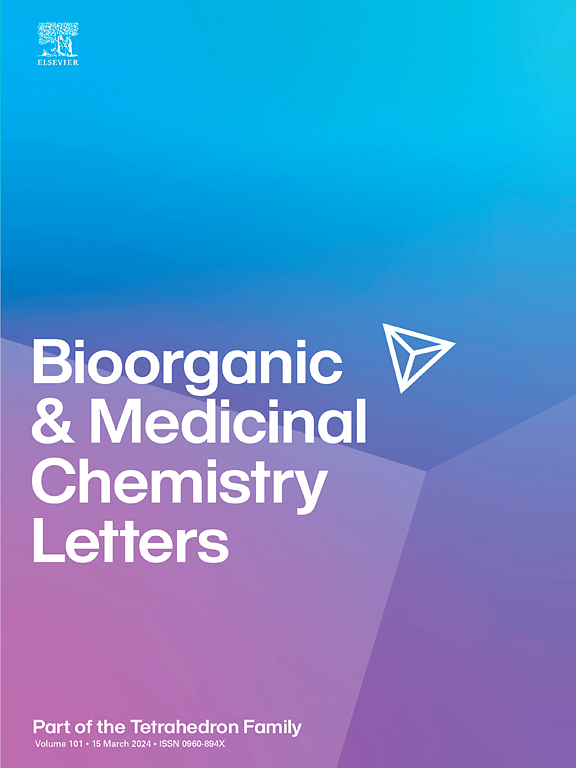ZLDI-8 facilitates pexophagy by ROS-mediated activation of TFEB and ATM in HeLa cells
IF 2.5
4区 医学
Q3 CHEMISTRY, MEDICINAL
引用次数: 0
Abstract
Autophagy-mediated organelle quality control is vital for cellular homeostasis. However, the mechanisms underlying selective autophagy of peroxisomes, known as pexophagy, are less well understood than those of other organelles, such as mitochondria. In this study, we screened a phosphatase inhibitor library using a cell-based system and identified several potent pexophagy inducers, including ZLDI-8, a known inhibitor of lymphoid-specific tyrosine phosphatase. Notably, treatment with ZLDI-8 selectively induces the loss of peroxisomes without affecting other organelles, such as mitochondria, the endoplasmic reticulum, or the Golgi apparatus. The peroxisome loss induced by ZLDI-8 was significantly blocked in ATG5-knockout HeLa cells, confirming its dependence on autophagy. We further found that ZLDI-8 treatment increases both cellular and peroxisomal reactive oxygen species (ROS), which were effectively scavenged by N-acetylcysteine (NAC). The increase in peroxisomal ROS leads to the activation of ATM kinase and the dephosphorylation of TFEB. Moreover, ROS scavenging prevents all of these processes. Taken together, these findings demonstrate that ZLDI-8 induces pexophagy through a mechanism involving peroxisomal ROS-mediated activation of TFEB and ATM. This study provides valuable insights into the molecular mechanisms regulating selective peroxisome degradation and potential therapeutic strategies for targeting pexophagy.

ZLDI-8通过ros介导的TFEB和ATM的激活促进HeLa细胞的噬噬。
自噬介导的细胞器质量控制对细胞稳态至关重要。然而,与其他细胞器(如线粒体)相比,人们对过氧化物酶体选择性自噬(称为自噬)的机制知之甚少。在这项研究中,我们使用基于细胞的系统筛选了一个磷酸酶抑制剂库,并鉴定了几种有效的噬酶诱导剂,包括ZLDI-8,一种已知的淋巴细胞特异性酪氨酸磷酸酶抑制剂。值得注意的是,ZLDI-8选择性地诱导过氧化物酶体的丢失,而不影响其他细胞器,如线粒体、内质网或高尔基体。ZLDI-8诱导的过氧化物酶体丢失在atg5敲除的HeLa细胞中被显著阻断,证实了其对自噬的依赖性。我们进一步发现,ZLDI-8处理增加了细胞和过氧化物酶体的活性氧(ROS),这些活性氧被n -乙酰半胱氨酸(NAC)有效清除。过氧化物酶体ROS的增加导致ATM激酶的激活和TFEB的去磷酸化。此外,活性氧清除可以阻止所有这些过程。综上所述,这些发现表明ZLDI-8通过ros介导的过氧化物酶体TFEB和ATM的激活机制诱导噬噬。这项研究为调控选择性过氧化物酶体降解的分子机制和靶向噬酶的潜在治疗策略提供了有价值的见解。
本文章由计算机程序翻译,如有差异,请以英文原文为准。
求助全文
约1分钟内获得全文
求助全文
来源期刊
CiteScore
5.70
自引率
3.70%
发文量
463
审稿时长
27 days
期刊介绍:
Bioorganic & Medicinal Chemistry Letters presents preliminary experimental or theoretical research results of outstanding significance and timeliness on all aspects of science at the interface of chemistry and biology and on major advances in drug design and development. The journal publishes articles in the form of communications reporting experimental or theoretical results of special interest, and strives to provide maximum dissemination to a large, international audience.

 求助内容:
求助内容: 应助结果提醒方式:
应助结果提醒方式:


